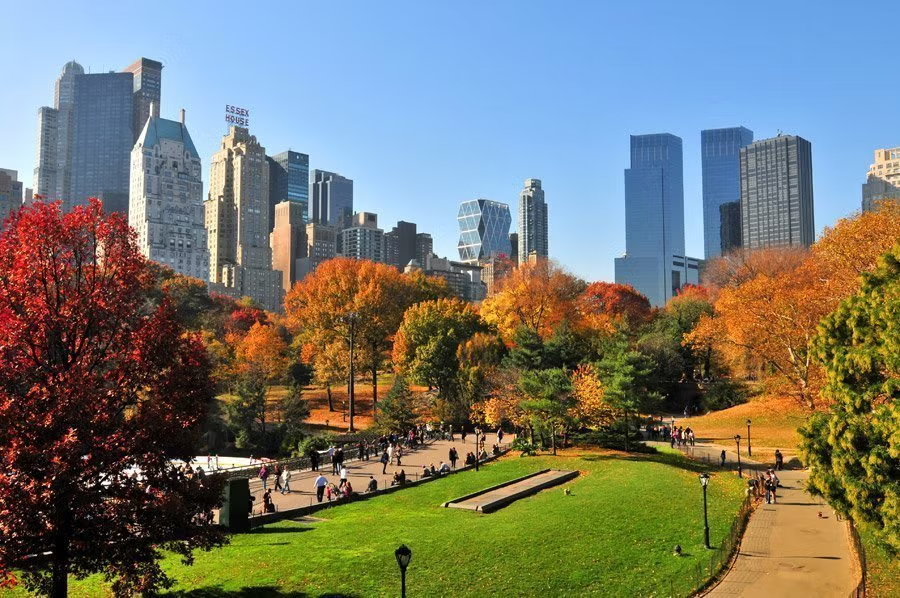Introduction: A Year in Shifts
Life moves in seasons. The way people eat, dress, and socialize transforms with the weather, and cannabis culture is no different. The strain you choose in July may not be the one that feels right in December. The rituals tied to smoking, vaping, or eating edibles adapt naturally to the rhythms of the year. The high itself is not just about the plant. It is about the context, the temperature, the mood of a season, and the rituals that unfold around it. Exploring cannabis through the lens of the seasons reveals how deeply it connects to human cycles and why it continues to evolve as a cultural anchor.
Spring: Renewal and Discovery
Spring is about fresh starts. The air warms, flowers bloom, and the city shakes off its winter shell. In cannabis rituals, spring represents curiosity and energy. After months of staying indoors, people rediscover the joy of smoking in parks, strolling through gardens, or taking long walks with friends. Strains that uplift and inspire creativity feel especially fitting this time of year. Bright sativas with citrusy terpenes like limonene or pinene mirror the crisp air and fresh greenery. The ritual of spring smoking is about moving outside again, carrying a joint into the park, and letting the first warm breezes of the year heighten the experience. Spring is also a season of experimentation. Many try new strains or new methods of consumption as a way of mirroring the growth happening all around them. The rituals of April and May reflect openness — a willingness to change, to expand, and to breathe new air.
Summer: Heat, Energy, and Social Rituals
Summer is the season of intensity. Long days and short nights bring people together for festivals, beach trips, rooftop parties, and late-night adventures. Cannabis rituals shift to match this energy. The high becomes more social, more about sharing joints or passing around a vape during outdoor concerts. Edibles also gain popularity in summer because of their portability. Rather than lugging around pipes or rigs, a gummy or infused beverage fits seamlessly into beach bags and picnic baskets. The terpenes that dominate in summer often reflect tropical flavors — mango, pineapple, and berry strains that feel refreshing under the sun. Cannabis also pairs with the foods of summer. Grilled meals, fresh fruit, and icy drinks taste brighter and more intense after a hit or two. The rituals of summer smoking are not about solitude. They are about community. Passing joints at barbecues, lighting up on ferry rides, or enjoying infused seltzers at outdoor gatherings define this season. The high of summer is tied to motion, laughter, and shared experience.
Autumn: Reflection and Warmth
Autumn is transitional. The air cools, leaves change, and the pace of life begins to slow. In cannabis rituals, autumn represents reflection. Strains with earthy, spicy terpenes feel especially grounding. Hybrids and indicas with notes of myrcene or caryophyllene mirror the richness of the season. Autumn rituals often revolve around cozy spaces — rolling a joint indoors, sipping tea with an edible, or enjoying cannabis alongside baking or cooking seasonal meals. Halloween and harvest festivals add a playful energy to fall, and cannabis often plays a role in enhancing these celebrations. For many, autumn is also about balance. After the wild energy of summer, cannabis rituals become more intentional, focusing on unwinding and preparing for the introspection of winter. Smoking while walking through parks filled with orange and red leaves, or lighting up before a quiet evening of journaling or film, defines the high of autumn. It is less about stimulation and more about grounding.
Winter: Stillness and Introspection
Winter brings cold, darkness, and a slower pace. Cannabis in winter is about warmth and stillness. Heavy indicas dominate, with relaxing terpenes like linalool and humulene encouraging deep rest. The rituals of winter smoking often involve blankets, hot drinks, and close circles of friends or family. Cannabis becomes part of holiday traditions for many, whether it is a joint before a big meal or a vape session after a long day of gatherings. The stillness of winter also encourages introspection. Many use cannabis to enhance meditation, journaling, or creative projects during the cold months. Edibles and tinctures become popular because they provide long-lasting effects that pair well with long evenings indoors. Winter high rituals are about presence. The smoke rising in contrast to cold air, the glow of lights against the darkness, and the quiet of streets blanketed with snow all shape the sensory experience. Cannabis in winter is less about outward energy and more about inner calm.
Seasonal Foods and Flavors
One of the most fascinating ways cannabis connects to seasons is through flavor. Just as food traditions change throughout the year, cannabis strains mirror these shifts. In spring, citrus-forward strains match the freshness of seasonal produce. In summer, tropical flavors pair with grilled meals and fruit. In autumn, earthy, spicy strains echo the richness of pumpkin spice and roasted foods. In winter, herbal and floral strains complement hot drinks and comfort food. These flavor pairings turn cannabis into part of seasonal cuisine, deepening its role in cultural rituals.
Seasonal Music and Cannabis Pairings
Music also reflects seasonal energy, and cannabis amplifies this connection. In summer, cannabis pairs with upbeat music — hip hop, dance, reggae — that fuels outdoor gatherings. Autumn calls for reflective soundtracks, from folk to lo-fi beats. Winter pairs with slower, atmospheric sounds, from jazz to ambient tracks. Spring returns with energetic playlists that signal renewal and growth. Cannabis not only enhances music but also deepens its seasonal associations. The same strain smoked in summer may feel entirely different when paired with winter soundscapes. The ritual of combining music, cannabis, and seasonal context creates powerful sensory memories.
Seasonal Rituals Across Cultures
Cannabis and seasons are not only a modern connection. Across cultures, people have tied cannabis to seasonal rituals for centuries. In India, cannabis-infused bhang is consumed during spring festivals like Holi, reflecting renewal and joy. In Jamaica, cannabis plays a role in harvest rituals, connecting people to the land and community. In parts of the Middle East, hashish has long been tied to winter gatherings, where warmth and storytelling define the ritual. These traditions show that cannabis has always been seasonal, woven into the cycles of nature and human life.
How Seasons Shape Strain Choice
Many modern consumers adjust their strain choices based on season without even realizing it. In summer, uplifting sativas fit the mood of long days and social nights. In winter, relaxing indicas suit the desire for warmth and rest. Hybrids dominate autumn, bridging activity with reflection. Spring invites experimentation with new strains and flavors. This seasonal rhythm helps people connect more deeply with cannabis. Rather than treating it as static, they engage with it as a dynamic part of their environment and lifestyle.
The Science of Seasonal Highs
Beyond culture and tradition, science also explains why cannabis experiences feel different depending on season. The body’s circadian rhythm and hormonal cycles shift with changes in daylight and temperature. These shifts influence mood, appetite, and energy. Cannabis interacts with these rhythms, sometimes amplifying them. A strain that feels energizing in summer may feel overwhelming in the slower pace of winter. Similarly, a relaxing indica that feels perfect on a cold December night may feel too heavy during a bright spring afternoon. Understanding this helps consumers align cannabis use with natural cycles for a more harmonious experience.
The Future of Seasonal Cannabis Culture
As cannabis culture matures, seasonal consumption may become more intentional. Imagine cannabis menus that rotate like seasonal restaurant menus, highlighting strains and products that fit the mood of each season. Summer gummies with tropical flavors, autumn pre-rolls infused with spice terpenes, winter tinctures designed for relaxation, and spring vape blends that uplift. Seasonal branding, packaging, and experiences could become standard, turning cannabis into a product that mirrors food, fashion, and art in its seasonal expression.
Conclusion: A Year of Highs in Rhythm with Nature
Cannabis has always been about more than the plant itself. It is about the context, the ritual, and the way it enhances life. Seasons shape how people eat, listen, move, and feel. Cannabis fits into this rhythm effortlessly. Spring brings curiosity, summer energy, autumn reflection, and winter stillness. Each season offers a new way to experience cannabis, a new ritual, and a new memory. For those who pay attention, the high becomes a cycle, moving in harmony with the natural world. Cannabis is not just part of life. It is part of the seasons that define it.



